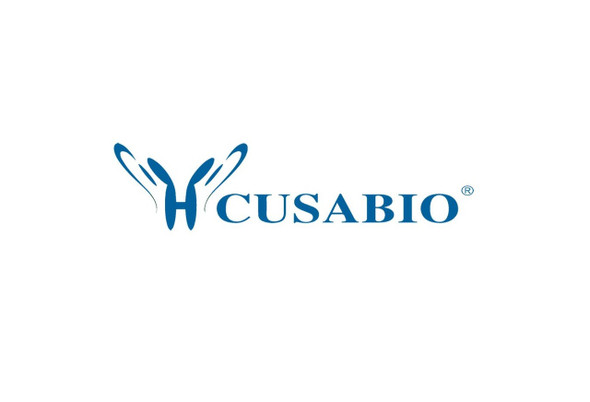Cusabio Mouse Recombinants
Recombinant Mouse Protein Wnt-10a (Wnt10a) | CSB-EP026129MO
- SKU:
- CSB-EP026129MO
- Availability:
- 13 - 23 Working Days
Description
Recombinant Mouse Protein Wnt-10a (Wnt10a) | CSB-EP026129MO | Cusabio
Alternative Name(s): /
Gene Names: Wnt10a
Research Areas: Cancer
Organism: Mus musculus (Mouse)
AA Sequence: VPRSAPNDILGLRLPPEPVLNANTVCLTLPGLSRRQMEVCVRHPDVAASAIQGIQIAIHECQHQFRDQRWNCSSLETRNKVPYESPIFSRGFRESAFAYAIAAAGVVHAVSNACALGKLKACGCDASRRGDEEAFRRKLHRLQLDALQRGKGLSHGVPEHPAILPASPGLQDSWEWGGCSPDVGFGERFSKDFLDSREPHRDIHARMRLHNNRVGRQAVMENMRRKCKCHGTSGSCQLKTCWQVTPEFRTVGALLRNRFHRATLIRPHNRNGGQLEPGPAGAPSPAPGTPGLRRRASHSDLVYFEKSPDFCEREPRLDSAGTVGRLCNKSSTGPDGCGSMCCGRGHNILRQTRSERCHCRFHWCCFVVCEECRITEWVSVCK
Source: E.coli
Tag Info: N-terminal 10xHis-tagged and C-terminal Myc-tagged
Expression Region: 36-417aa
Sequence Info: Full Length of Mature Protein
MW: 49.9 kDa
Purity: Greater than 85% as determined by SDS-PAGE.
Relevance: Ligand for members of the frizzled family of seven transmembrane receptors (Probable). Functions in the canonical Wnt/beta-catenin signaling pathway. Plays a role in normal ectoderm development. Required for normal tooth development. Required for normal postnatal development and maintenance of tongue papillae and sweat ducts. Required for normal proliferation of basal cells in tongue filiform papillae, plantar epithelium and sweat ducts. Required for normal expression of keratins in tongue papillae. Required for normal expression of KRT9 in foot plant epithelium. Required for normal hair follicle function.
Reference: "WNT10A mutation causes ectodermal dysplasia by impairing progenitor cell proliferation and KLF4-mediated differentiation." Xu M., Horrell J., Snitow M., Cui J., Gochnauer H., Syrett C.M., Kallish S., Seykora J.T., Liu F., Gaillard D., Katz J.P., Kaestner K.H., Levin B., Mansfield C., Douglas J.E., Cowart B.J., Tordoff M., Liu F. Millar S.E. Nat. Commun. 8:15397-15397(2017)
Storage: The shelf life is related to many factors, storage state, buffer ingredients, storage temperature and the stability of the protein itself. Generally, the shelf life of liquid form is 6 months at -20?/-80?. The shelf life of lyophilized form is 12 months at -20?/-80?.
Notes: Repeated freezing and thawing is not recommended. Store working aliquots at 4? for up to one week.
Function:
Involvement in disease:
Subcellular Location:
Protein Families:
Tissue Specificity:
Paythway:
Form: Liquid or Lyophilized powder
Buffer: If the delivery form is liquid, the default storage buffer is Tris/PBS-based buffer, 5%-50% glycerol. If the delivery form is lyophilized powder, the buffer before lyophilization is Tris/PBS-based buffer, 6% Trehalose, pH 8.0.
Reconstitution: We recommend that this vial be briefly centrifuged prior to opening to bring the contents to the bottom. Please reconstitute protein in deionized sterile water to a concentration of 0.1-1.0 mg/mL.We recommend to add 5-50% of glycerol (final concentration) and aliquot for long-term storage at -20?/-80?. Our default final concentration of glycerol is 50%. Customers could use it as reference.
Uniprot ID: P70701
HGNC Database Link: N/A
UniGene Database Link: N/A
KEGG Database Link: N/A
STRING Database Link: N/A
OMIM Database Link: N/A









